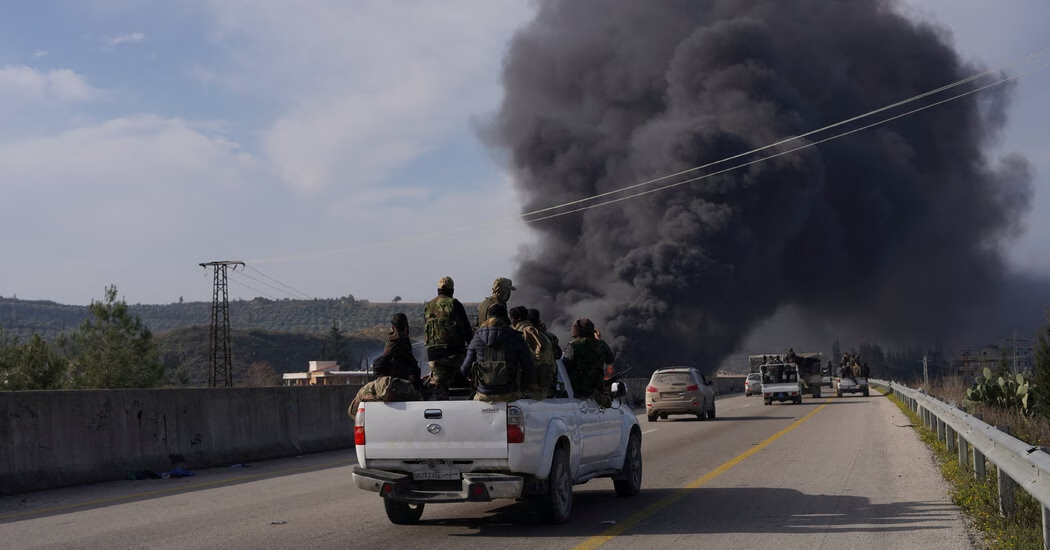The new president of Syria has frequently called for the unification of various armed groups into a single national army in order to replace the ousted leader Bashar al-Assad. However, the recent spike in violence in northwestern Syria, which resulted in hundreds of civilian deaths, has shown how far away this goal still is. The violence displayed the government’s lack of control over its own forces and its inability to regulate other armed groups, as per experts.
The outbreak of violence began when insurgents connected to the Assad regime launched attacks on government forces in March. The government responded by mobilizing its security forces, which were joined by other armed groups and civilians. These fighters, some under the government’s control and others not, targeted suspected insurgents and carried out killings of Alawite civilians, according to human rights groups.
The new government’s leaders and security forces are primarily comprised of Syria’s Sunni Muslim majority, while the victims of the violence are predominantly Alawite, a minority sect associated with Shiite Islam. The Assad family is Alawite, and during their rule, they often favored members of the minority community in security and military roles. As a result, many Sunnis associate the Alawites with the old regime’s brutal attacks on their communities during the civil war.
It will take time to fully understand the events due to their widespread nature and the difficulty in identifying fighters and their affiliations. However, the violence on the coast represented the deadliest few days in Syria since the ousting of Assad in December, highlighting the chaos among the country’s armed groups.
The Syrian Network for Human Rights has reported that militias and foreign fighters affiliated with the new government, but not yet integrated into it, were mainly responsible for the recent sectarian and revenge-driven mass killings. The government’s weak control over its forces and their failure to follow legal guidelines were significant factors in the increasing number of violations against civilians. As the violence escalated, some operations turned into large-scale acts of retaliation, accompanied by mass killings and looting carried out by undisciplined armed groups.
The Syrian Observatory for Human Rights recorded over 1,000 killings, many of which were civilians, since March 6, while another monitoring group, the Syrian Network for Human Rights, reported the overall death toll at 1,500, most of whom were Alawite civilians.
No direct evidence has linked the atrocities to senior officials in the new government, led by interim President Ahmed al-Shara. The government stated that they created a fact-finding commission to investigate the violence and vowed to hold accountable anyone who committed abuses against civilians. However, accusations have been made that insurgents linked to the Assad family and backed by an unnamed foreign power commenced the violence.
During the long and bitter civil war, which killed over half a million people, many rebel factions formed to fight Assad. The newly appointed President al-Shara, a Sunni Islamist rebel leader, has vowed to integrate these rebel groups into a single national army to restore unity in the country. However, progress in integrating these armed groups has been slow as many rebel factions are resistant to giving up their autonomy. The task is complicated by the country’s devastated economy and international sanctions imposed on the former regime that hinder efforts to seek foreign aid.
The integration effort has made little concrete progress, with many armed groups remaining loyal to their commanders and lacking proper training or salaries from the government. Additionally, some rebel factions still control significant parts of the country, while other armed groups and civilians have armed themselves for self-protection.
The government’s recent arrests of fighters seen committing violence against civilians in videos posted online has been seen as a positive step towards accountability. However, there are doubts about the government’s ability to track down and punish fighters whose crimes were not captured on camera.
Video footage has shown fighters denigrating Alawites and framing attacks on them as retribution. While the government has made some arrests, there is concern about whether they have the internal mechanisms to identify the offenders and take appropriate action.
Source: https://www.nytimes.com/2025/03/17/world/middleeast/syria-military-assad.html





